Cloud computing is a relatively well-known term today.
As companies search for more flexibility and scalability in an ever-changing environment, cloud infrastructure offers unique growth opportunities. However, even as cloud platforms and providers’ demands grow, people remain uncertain about the definition of cloud computing.
Today, we’ll be introducing some useful insights into the nature of cloud resources, how they work, and what they mean to the businesses of tomorrow. We’ll answer questions from “what is cloud computing?” to “what kinds of cloud resources are available today?”
Here’s your insight into the cloud.
Cloud computing stats
We’re in the age of big data. With the exponential increase in data use, it’s becoming ever harder for companies to keep vital information, programs, and operating systems up and running on conventional in-house computer servers. In a bid to cut costs, ensure better security and become more agile, cloud computing has taken the world by storm.
The recent COVID crisis boosted cloud adoption further and forced real-time digital transformation upon the majority of enterprises. According to research by The Cloud Industry Forum (CIF), 69% of companies have recently hastened their migration to the cloud – with 91% of decision-makers describing this strategy as having played a critical role in their continuity.
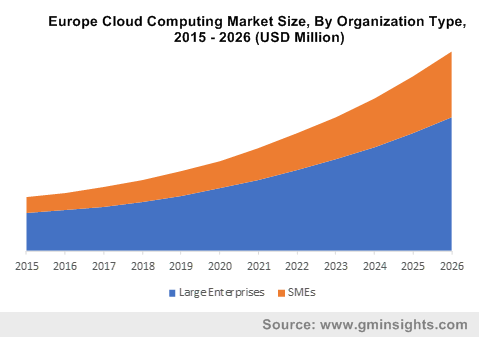
The recent COVID crisis boosted cloud adoption further and forced real-time digital transformation upon the majority of enterprises. According to research by The Cloud Industry Forum (CIF), 69% of companies have recently hastened their migration to the cloud – with 91% of decision-makers describing this strategy as having played a critical role in their continuity.
What is cloud computing?
Cloud computing is an umbrella (general) term for anything that involves using hosted services on the internet. Typically, cloud services fall into one of three primary categories: IaaS, PaaS, and SaaS. We’ll break those down a little further soon.
The term “cloud computing” comes from the cloud symbol that often represents internet connections in diagrams and flowcharts. A full cloud infrastructure involves all the components required for cloud computing, from SaaS applications to real-time data analytics, and more. Some high-performance cloud platform solutions also come with access to disruptive technology, like AI.
Most of us are using cloud computing every day, even if we don’t realise it. We use online services or cloud applications to make calls, send emails, watch films, share, store and edit documents, play games and even watch TV. Cloud software enables users to access all the features and files they need without having to keep the bulk of them on their own computers.
Cloud platform
A cloud platform can be private or public. While public cloud solutions can offer services to anyone online, private clouds are proprietary data centres or networks that supply hosted services to specific people. Private cloud services come with unique access and permission settings to ensure protection for sensitive data.
Users send their personal data to cloud-hosted servers so they can store their information to access later. These apps are for personal use, however, cloud-based apps are even more useful to businesses as they allow them to access large amounts of data over secure online network connections.
Cloud computing describes services that are hosted over the internet. These services can be divided into three main categories:
- Infrastructure as a service (IaaS)
- Platform as a service (PaaS)
- Software as a service (SaaS)
There’ll be more on those later.
Cloud computing has been around as a term since the 1960s. The cloud metaphor was borrowed from telecoms network schematics, where the public telephone network was represented by a picture of a cloud. This was to illustrate the series of connections making up the network as electronic ‘stuff’ that can’t be seen.
Clouds can be private, public, or a hybrid of both. A public cloud sells services to anyone on the internet, whilst a private cloud is a proprietary data centre – or data centre, depending on where it is in the world – that supplies hosted services to specific people – setting access and permissions for them.
Whichever type of cloud computing is used, its aim is to provide simple yet scalable access to computing resources, IT and telephony services.
How does cloud computing work?
When it comes to understanding cloud computing it can be useful to examine it in terms of two interfaces. Those are the front-end and backend of the computing system. The front-end of the system lets users access cloud-stored data via internet web browsers or cloud computing apps.
Main component of cloud computing
The main component of cloud computing, however, is related to the backend. This is the aspect of the system that’s responsible for the functionality that allows the storage of data and information.
The backend is made up of servers – including central servers, databases, and computers.
The central server uses ‘middleware’, a type of software that ensures seamless connections between the devices linked by cloud computing. Cloud providers generally keep multiple copies of data to mitigate the risk of security breaches and data loss.
Rather than buying and running their own IT infrastructure or data centres, companies can hire out access to resources – including applications and storage – from cloud service providers.
This means they can avoid the upfront costs and complexities of having to buy and manage operations in-house. They can simply pay for what they need as required from the cloud computing provider.
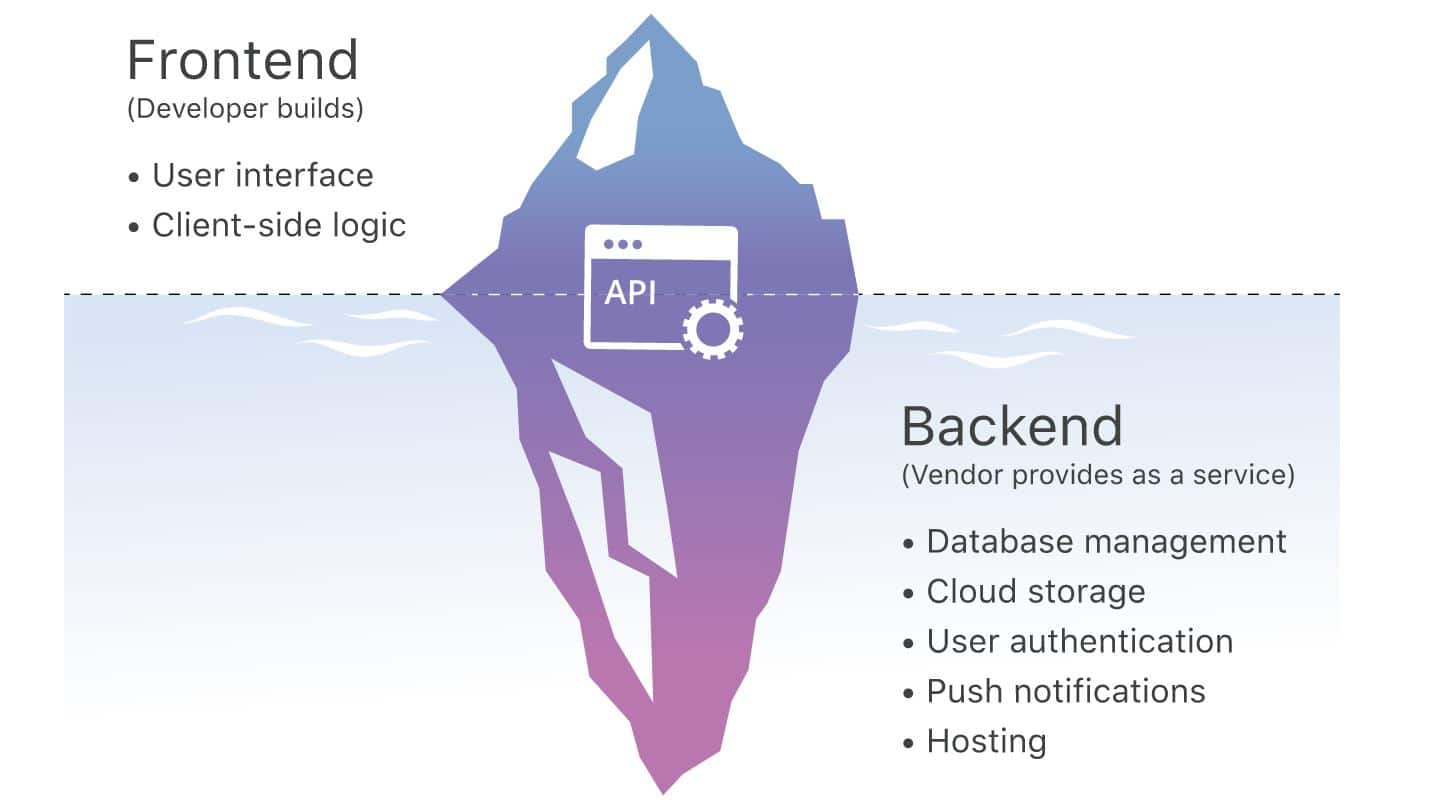
Cloud computing vs. traditional web hosting?
While cloud computing and web hosting can look similar (since they have similar setups and deliver similar results) there are critical differences between them.
Web hosting is the process of offering remote location and maintenance for files, and server space to support web projects. There are two types of hosting: virtual or dedicated. In the first instance, a company pays for a certain amount of space on a server. The second option assumes that the site owner pays for full control over one or more servers.
Cloud computing is more scalable than traditional web hosting. Cloud storage represents storage located in virtual space. Instead of paying for fixed space on a virtual or physical server, users pay for resources used. When an application or website experiences higher or lower levels of traffic, the cloud servers can quickly scale up or down automatically. Cloud hosting removes the need to manually add or remove server space.
Cloud computing features and benefits
Currently, the cloud computing market will reach a value of $718.07 billion by 2027, driven by demand for great flexibility, scalability, and opportunities for business continuity.
The biggest appeal of cloud computing is that it allows companies to scale applications and features dynamically. Cloud storage services can grow according to your needs, while cloud applications evolve naturally over time. Today’s companies are using cloud services for everything from the digital transformation of business operations, to secure storage of big data and more.
The flexibility of the cloud also means that companies can unlock new functionality in their ecosystem at the touch of a button. Cloud services range from automation tools that reduce backend data entry to artificial intelligence and IoT applications. Many cloud leaders are already experimenting with machine learning and other disruptive tech.
1. Flexibility
Over time, companies may want to scale. With traditional hosting, users have to change their plan or service provider to do so. Cloud hosting offers extra flexibility. Scaling doesn’t require a server restart and can be done at any time, in real-time. Flexible payment options mean companies don’t have to overpay for unnecessary space.
Users can also connect extra resources, such as RAM or network bandwidth, in just a few clicks. For example, if you’re about to launch an advertising campaign you will hopefully receive a good response and more site visitors than usual. In the cloud, you can respond immediately to this extra load and avoid crashes or downtime.
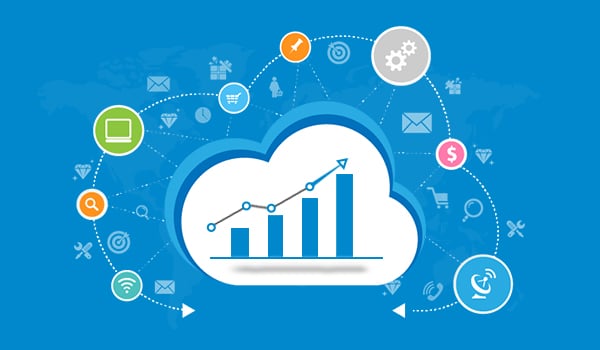
As it can be difficult to predict rapid traffic growth, traditional hosting companies are unprepared and unable to scale up in time. When spikes occur, they can then lose users due to server failure.
Web pages that are slow to load are estimated to cost companies dearly. 40% of users say they abandon websites if pages take longer than three seconds to load. This is far less likely to happen with a cloud-hosted solution in place.
2. Work from anywhere
One of the other principal benefits of cloud computing is its compatibility with remote working. Cloud computing enables mobile access to corporate data via smartphones and other devices, ensuring everyone is kept in the loop. Staff working remotely or living in different geographic locations can keep instantly up to date with clients, customers and co-workers.
For example, contact centre agents can access customer information using cloud-based customer relationship management (CRM) software on smartphones or tablets. – whether they’re working from home or travelling. They can quickly share that information with other employees anywhere in the world.
Some 20% of companies worry about the cost of transitioning to the cloud. What they should be focusing on, though, is improved ROI than investing in cloud IT infrastructure will bring in the long-term. Transitioning to the cloud, in any case, saves companies at the setup stage since there’s no need to invest in expensive hardware like servers and data storage devices.
Once in the cloud, accessing data is cheaper because there’s no need to pay for features that are unwanted. Most cloud computing IT services, after all, are ‘pay as you go’. That means that you can access storage space to the exact extent that it’s required and won’t be charged for it.
3. Automatic updates
SaaS cloud providers usually take care of regular software and security updates on behalf of their users. This means users don’t have to put any routine software maintenance issues on the calendar. Thus enabling them to focus on running core aspects of their business.
4. Disaster recovery
A big factor contributing to the success of any company is control and business continuity. No matter how in control a company is over its own processes, some things remain out of its remit. Even a small amount of downtime can have a huge negative impact on productivity, revenue, and brand reputation.
While it can’t prevent all outages, the cloud can help you mitigate disaster by speeding up recovery from these events. Cloud-based services can help businesses recover from all types of emergency scenarios – from natural ‘act of God’ disasters to power outages.
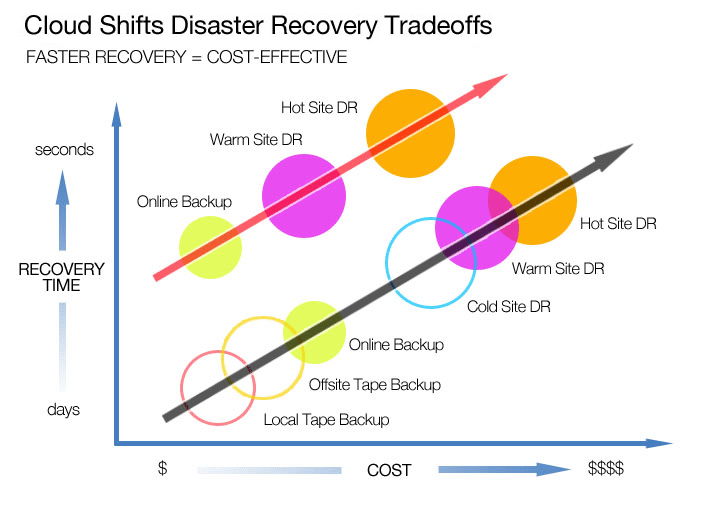
5. Security
Web hosting has a high-reliability factor, but cloud security has surpassed its capacity in many ways. In the cloud, as well as protecting against malicious attacks and keeping data secure, web application firewalls and advanced monitoring systems assist in ring-fencing data.
While some companies worry about keeping their data and communications secure when it’s not kept on site, the cloud is capable of carefully monitoring security – far more so than a conventional in-house system. RapidScale claims that 94% of businesses saw an improvement in security after moving to the cloud.
As well as the firewalls and monitoring systems, the reason data is so secure in the cloud is because it’s encrypted when transmitted over networks and stored in databases. Encrypting data makes it less accessible to hackers or to people without the right levels of authorisation. As well as this, most cloud-based services offer extra layers of security which can be set by the user.
The cloud also helps companies to meet government compliance requirements.
What are cloud computing deployment models?
There are three main cloud computing types: private, public, and hybrid. Each has aspects that are more or less suitable for different companies.
Private cloud computing
In a private cloud scenario, users receive data delivered from a company’s own data centre. Private clouds help companies build and maintain their own underlying cloud infrastructure.
It’s a cloud model that offers convenience, versatility and allows companies to stay agile. At the same time, the private cloud option enables companies to retain control over the management, control and security normally associated with local data centres.
Internal users may be billed for services via IT chargeback. Some common private cloud technology vendors include VMware and OpenStack.
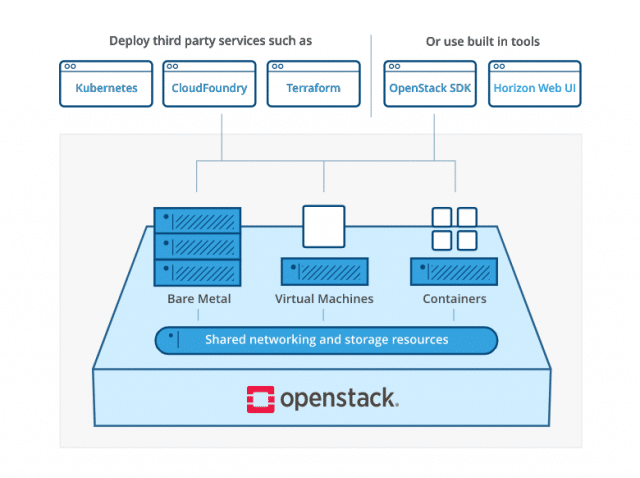
Public cloud computing
A public cloud model involves a third-party cloud service provider delivering cloud services over the internet. Public cloud services are provided on-demand, usually by the hour or minute. However, it’s also possible to set up longer-term commitments for some services.
Customers pay only for the CPU (central processing unit) cycles, storage, or bandwidth consumed. Some well-known cloud service providers include Amazon Web Services (AWS) and the cloud computing Google Platform.
Hybrid cloud computing
Hybrid cloud models combine public cloud services with on-premises private cloud solutions. That’s with both cloud systems automated and synchronised in an all-in-one solution. Businesses can run mission-critical workloads or handle sensitive applications on a private cloud then use the public cloud to take care of spikes in workload demand.
The aim of a hybrid cloud is to create a unified, automated and scalable environment, taking the best a public cloud model can offer while keeping control over mission-critical information.
What are the types of cloud computing?
Cloud computing solutions come in a range of solutions depending on the functionality of your business needs. The kind of cloud platform you get for something like SaaS will be very different from the cloud backend you want for big data management and block storage.
There are three main types of cloud computing service models, each having its own advantages and disadvantages. These are as follows:
IaaS
Infrastructure as a service(IaaS) providers supplies users with virtual server instances, as well as storage. Cloud providers utilise APIs that allow users to migrate their workloads to a virtual machine(VM). Users are allocated a certain amount of storage space and they can start and stop the VM as well as configure it as desired. That’s alongside the ability to decrease or increase their storage capacity.
Infrastructure as a Service or “IaaS” is another solution from public cloud service providers. With this cloud service, companies offer computing and data storage services, often on a pay-as-you-go basis. The full selection of cloud services offered by today’s providers is massive. You can unlock everything from virtual private networks (VPNs) to highly scalable cloud databases and machine learning tools.
IaaS services can cover machine learning, developer tools, application monitory systems, and more. Amazon Web Services is currently among the best-known IaaS providers, alongside IBM and Google Cloud Platform.
Pros of IaaS
- With IaaS, users don’t have to buy their own hardware. They can deploy their own platforms and applications within the provider’s virtual machines – machines that offer the same kinds of capabilities as those of physical data centres.
- It’s a flexible and dynamic model that’s easy to deploy.
- It’s cost-effective since it’s provided on a ‘pay as you go’ basis.
Cons of IaaS
- Because it uses multi-tenant architecture, IaaS could be more exposed to security threats.
- If a vendor suffers outages, these are passed onto users.
PaaS
Platform as a service (PaaS) is a model whereby cloud providers host all development tools on their infrastructures. Users can access the tools via APIs, gateway software, or portals. PaaS can be used for initial software development or DevOps, after which the PaaS provider can go on to host the software on behalf of users. Common PaaS providers include the Google cloud platform and AWS Elastic Beanstalk.
Platform as a Service, or PaaS, is a solution providing sets of workflows and services targeted at DevOps. Developers in this landscape can use shared processes, tools, and APIs to accelerate the deployment of enterprise applications. For instance, Heroku from Salesforce is a popular cloud PaaS solution, as is Cloud Foundry from Pivotal.
Platform as Service solutions ensures that developers have easy access to the resources they need and follow certain processes to achieve their goals. While developers innovate and build, the PaaS cloud service providers maintain the IT infrastructure of the service underneath.
Pros of PaaS
- PaaS offers a speedy way to develop software
- It’s a cost-effective way to create and test apps using data analytics.
- It allows for easy migration to the hybrid cloud.
Cons of PaaS
- The multi-tenant version opens up an extra threat to security issues.
- The user experience depends on the vendor’s speed, reliability and support.
SaaS
Software as a Service or “SaaS” is a kind of public cloud computing solution. With SaaS, you can deliver applications through the internet, usually in a browser. For instance, the G-Suite from Google is an example of SaaS, as is Microsoft 365 and Salesforce.
Cloud services delivered in a SaaS format can encompass anything from enterprise communication applications to customer relationship management tools and machine learning cloud applications. Many SaaS leaders today are beginning to offer advanced configuration options and development environments that allow developers to build their own cloud applications.
Software as a service (SaaS) is a highly popular on-demand cloud-native model that’s seen huge uptake over the last few years.
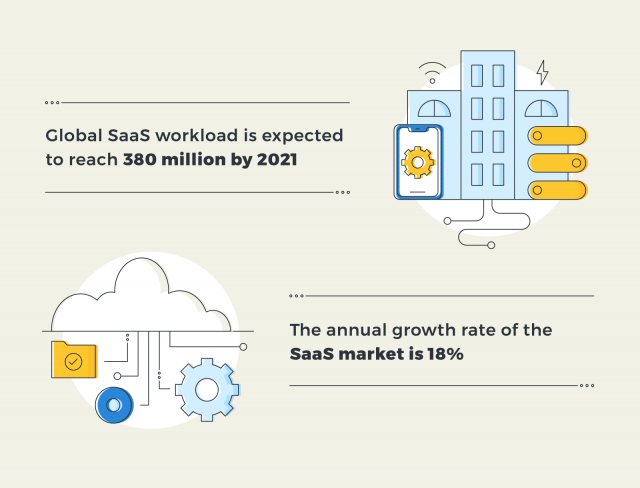
SaaS delivers software applications over the internet. These services are commonly known as web services, and users can access them from any location and on any device with an internet connection. In the SaaS cloud model, users can access the application software and the databases. Common examples of SaaS applications include DropBox, Microsoft Azure and Salesforce.
Pros of SaaS
- With SaaS, there are no hardware components or setup costs involved for end-users.
- Users can access web applications and cloud resources on any device and upgrades are automatically applied.
- SaaS cloud is scalable and easily customisable.
Cons of SaaS
- Users have very little control and there are a limited number of utility computing solutions available.
FaaS (Functions as a Service)
Functions as a Service or FaaS technology is a slightly lesser-known set of cloud computing services in the current environment. This is essentially the cloud version of “serverless” computing, which adds another layer to PaaS so that developers are insulated against anything in the stack beyond their code.
Rather than working with virtual servers, application runtimes, and containers, they upload functional blocks of code and set them to trigger from a specific event, such as a form submission or an uploaded file. All the major cloud providers currently offer FaaS on top of IaaS, such as Google Cloud Functions, and Azure Functions.
Private Cloud
We’ve mentioned the private and public cloud environments already, but let’s take a closer look at what it really means to access public or private cloud services. In a private cloud environment, you downsize the number of technologies required to run IaaS public clouds, into software that you can deploy and operate in a customer data centre.
Similar to the public cloud, people using private cloud resources can provision their own virtual resources. Using these tools, it’s possible to build, run, and test applications. For administrators, the private cloud offers the best possible support for data centre automation. Companies minimise manual management and provisioning and enhance cloud opportunities.
Common examples of private cloud solutions include OpenStack, for open-source performance, and VMWare’s Software-Defined stack. Interestingly, some experts argue that private cloud solutions don’t conform to the full definition of cloud computing. A private cloud asks organisations to build and maintain their own infrastructure. However, the cloud, in general, is a service.
Hybrid Cloud
The hybrid cloud is an integration of public and private cloud solutions. In its most advanced form, hybrid clouds generally include the creation of parallel landscapes where applications can shift from one ecosystem to another. However, there are instances of hybrid clouds where databases may remain in the customer data centre and integrate with public applications.
READ Can businesses kill the desk phone in 2017?
Teams can also replicate virtual data centre workloads into the cloud during moments of peak demand to form a hybrid environment. The kinds of integrations between public and private solutions vary, but the connections available need to be extensive for something to be a “hybrid” cloud.
Public APIs
As the cloud landscape continues to grow more flexible and customisable, new solutions are emerging in the form of application programming interfaces. Similar to the way that SaaS solutions provide applications to users through the internet, APIs give developers web-based access to application functionality. With public APIs, developers can access essential functions programmatically.
When building web applications, for instance, developers generally access the Google Map API to access things like driving directions. If you wanted to build an application that worked with social media, you’d use an API maintained by a company like LinkedIn or Facebook. APIs can even assist in adding new communication capabilities to an existing UC stack. Companies like Twilio deliver messaging and telephony APIs, alongside mobile app services. With these tools, any business can add new functionality to an existing tool.
How to move to cloud computing
It’s actually simple to get set up in the cloud, especially if you opt for SaaS where you can sign up for a service, see how it works and understand how it benefits your company.
To ensure your migration is successful, think about your current data centre environment and software components. Even if you’re a small business you will probably have lots of apps, some developed internally or others as packaged software. When you’re peeling off applications and moving them to a cloud environment, think about how this will impact your overall business.
Some questions to ask include:
- Are there common business services used by multiple apps?
- Are these common business services self-contained?
- Does each app have its own architecture?
Instead of moving all apps directly to the cloud, it might be a better idea to simplify your internal computing environment first. Consider compliance and privacy issues, as well as security and the data management specific to your business before making a decision. You can then make an informed decision on the best cloud model and type for you.
Cloud computing security
With large-scale breaches becoming commonplace, it’s essential to find the most secure cloud storage for your data. A provider that offers zero-knowledge encryption as a standard is a must. This means the vendor does not store a copy of your encryption key. Without the key, a provider cannot access your files. Even if the servers are accessed illegally, your information will still be inaccessible to anyone but you.
If you’re only worried about protecting especially sensitive files, you can find a provider that allows you to isolate those requiring higher security, making other files more accessible.
Two-factor authentication is a feature you should consider too. This is usually in the form of a code that’s generated on a specific device, such as a smartphone. Unless hackers have access to your phone and the password, they can’t get into your data – adding an extra layer of security.
The benefits of the cloud are significant, and they continue to grow more impressive with time. Unfortunately, there are still some challenges out there that are making it harder for some companies to embrace the cloud fully. Objections to the public cloud began with a focus on cloud security, and how safe companies could keep data housed in a cloud environment.
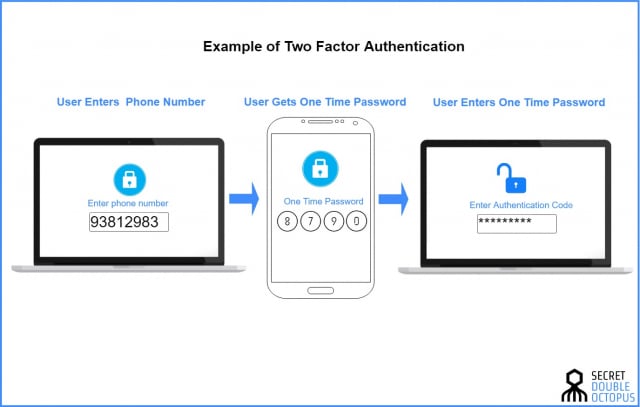
Today’s businesses are increasingly nervous about the integration of security policies, encryption, and identity management in a cloud landscape. Some government regulations in certain parts of the world even forbid companies from storing sensitive information off-premise. This makes it much harder to access a cloud landscape that can check all the right boxes for functionality and security.
Over the years, the security solutions available for cloud computing have evolved. Companies have begun to invest more time and effort into building in-depth encryption strategies to protect data from theft. At the same time, the right cloud services provider can often offer support for things like local data centres and local data management to help with sensitive information.
Despite these evolutions, many companies remain concerned about how secure cloud services can really be. In most cases, how safe your cloud technology is will depend on how secure your existing systems and investments are. Even with the support of encryption and security features from your provider, you will still need to have the right permissions, controls, and best practices in place.
Fortunately, there are opportunities in the cloud landscape today to access more advanced tools for secure computing. There are artificial intelligence tools that can spot potential data breaches in an instant and services that offer 24/7 monitoring of your systems. The key to success is working with the right cloud computing provider.
What are some examples of cloud computing?
Cloud computing underpins an endless array of services. These range from consumer services like Gmail to the cloud photo back-up features on smartphones. Other examples of cloud computing include Netflix, which relies on the computing power of the cloud to run its video streaming service.
Many software vendors also offer their apps as services over the internet. These are often available on a subscription basis and are as diverse as IBM, Zoom, WhatsApp, Skype, Microsoft Office 365, Google docs and more.
-
Collaboration platforms
Collaboration platforms are an up-and-coming offering in the world of cloud computing services. In a world where the workplace is rapidly changing, collaboration platforms leverage the cloud to keep people and teams connected. The tools included in a cloud collaboration platform depend on the cloud computing provider you choose. Services like RingCentral Glip offer easy messaging to engage in conversations with colleagues almost in real-time.
Services like Microsoft Teams, Slack, and Avaya Spaces support file sharing, video and audio conferencing, and other helpful features. Many of the leading cloud providers investing in collaboration also provide APIs that allow customers to augment the functionality of their tools with new things like CRM connections, or bots.
-
UCaaS (Unified Communications as a Service)
The evolution of the “software as a service” environment is prompting a transformation in the way that companies consume technology. This is particularly true in the communication space. Unified Communications or “UC” refers to a platform that combines all of the communications tools a company needs into a single environment. As the communication channels available continues to evolve, these environments are growing and changing too. Unified Communications, as a Service, or UCaaS, helps businesses to stay on the cutting edge.
A UCaaS ecosystem builds on the flexibility of the software as a service model. With a cloud platform for unified communications, companies can access cloud data storage and cloud applications in the same place. You can add features for machine learning, messaging, and disaster recovery to your UC system in minutes. Your UCaaS provider can also help you with tapping into new cloud services and mobile apps without the need for excessive on-premises investment.
What is the future of cloud computing?
Today, in this world of digital transformation and the IoT, everything can be connected digitally to cloud computing. The cloud has changed everything when it comes to jobs, services, apps and platforms. In combination with other tech developments like AI and machine learning, the rise of the cloud has been a true revolution.
It’s predicted that companies will continue to deploy combinations of cloud-based software products and on-premises solutions. This deployment will enable more and more companies to create hybrid IT architectures, allowing them to compute and store data precisely as they need.
Takeaway
If you’re after a cloud-based telephony system, RingCentral could be the ideal choice. It offers you a comprehensive communications solution that can bring together global teams and customers. The straightforward pricing plans mean it can also deliver the ideal solution for startups and small businesses.
RingCentral’s Global Office offers a full cloud PBX service in over 40 countries. By accessing plug-in devices you can start making calls right away, without having to invest in expensive hardware and equipment. Everything’s provided in one flexible online package.
Despite years of innovation and growth in the cloud landscape, most people still see the cloud as new technology. It’s still sitting at a relatively early stage of adoption, and many companies are struggling to determine which apps and services they should move to the cloud for the sake of scalability and business continuity. It’s going to take a while before some larger enterprises feel 100% comfortable with the idea of shifting to the cloud.
However, cloud computing benefits for accessing essential resources and supporting business growth are too great for anyone to ignore. As we continue to make progress in all industries at break-neck speed, the cloud will be the only way for companies to contend with an ever-changing landscape and a growing ocean of data. Cloud technology is the only solution flexible enough to pivot and grow with businesses that can’t fully predict what their needs may be in the future.
Cloud computing isn’t just an idea anymore; it’s a reality for many businesses and an opportunity that continues to develop by the day.
RingCentral’s unified communications solution
RingCentral’s unified communications solution delivers everything from intelligent IVR and auto attendants to basic features including call forwarding and call screening. With RingCentral, small companies can access enterprise-level solutions with pay as you go options that reduce costs and offer the option to scale up or down whenever needed.
Whichever cloud solution you choose, it’s a technology that brings a host of benefits to the majority of companies. It enables businesses to forget about managing infrastructure and focus their energy on core business operations. While there are a few limitations with cloud computing, migrating to the cloud whether fully or partially, undoubtedly brings with it a host of advantages.
Originally published Dec 02, 2020, updated May 26, 2021



